Personalities
 |
 |
 |
 |
 |
 |
 |
The Counter-Revolutionary Link in the Three Works of St Louis de Montfort
I was asked to show the connection among the three works of St. Louis Grignion de Monfort: his Treatise on True Devotion to Mary, which deals with Our Lady; The Letter to the Friends of the Cross, which addresses those who appreciate the Cross of Our Lord Jesus Christ; and his book The Love of Eternal Wisdom which comments on the Book of Wisdom. I found in these books no indications that St. Louis Grignion was aware of the concordance I will now explain.
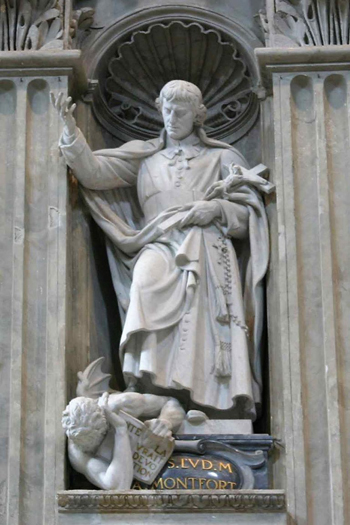 There was undoubtedly a certain unity among these books because St. Louis Grignion de Montfort had a single goal when writing all three. Usually – although there are exceptions — an intelligent mind that produces several works has a common intention motivating his efforts. So we must ask what that nexus — perhaps not fully explicit – was in the mind of St. Louis Grignion de Montfort.
There was undoubtedly a certain unity among these books because St. Louis Grignion de Montfort had a single goal when writing all three. Usually – although there are exceptions — an intelligent mind that produces several works has a common intention motivating his efforts. So we must ask what that nexus — perhaps not fully explicit – was in the mind of St. Louis Grignion de Montfort.
In my view, we can say this link lies in the Saint’s stand against the errors of his time. The time in which he lived violently collided with his ideas and apostolate. We have seen how he lamented his extreme isolation, how all the mighty people of the time fought against him and sought to destroy his apostolate through silence and mockery.
That era was characterized by the defects of the nascent French Revolution, which have only worsened since. When we study the works of St. Louis Grignion, we see they in effect take a stand against those errors. With this set of books he aimed to react against the times. That reaction reveals their unity because there is a unity in the defects of that time. There is at least an implicit unity in the works to refute and combat the three errors. It is here that we find the concordance among the works of St. Louis Grignion de Montfort.
True Devotion: A Counter-Attack against Jansenism
What were the errors of that time? In the religious sphere, Jansenism was the most blatant. One can say that the vast majority of the French episcopate was Jansenist and were conspiring to separate from Rome. They enjoyed the support of countless clerics and, therefore, a vast number of faithful.
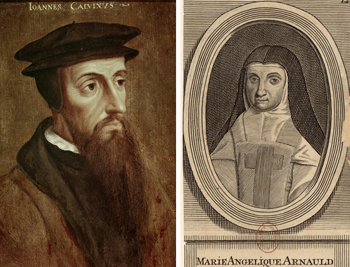 St. Louis lived when the dispute over Jansenism was still at its height (the late 17th and early 18th cenbturies). Jansenism was a doctrine concocted by Jansenius, bishop of Ypres, and published in his posthumous book called Augustinus. In it, he redrafted all the errors of Calvin under the pretext of dealing with questions of grace.
St. Louis lived when the dispute over Jansenism was still at its height (the late 17th and early 18th cenbturies). Jansenism was a doctrine concocted by Jansenius, bishop of Ypres, and published in his posthumous book called Augustinus. In it, he redrafted all the errors of Calvin under the pretext of dealing with questions of grace.
The errors of Calvin that directly interest us are those of Protestantism: free examination of Scriptures, rejection of veneration for Our Lady, the saints and the Holy Eucharist, and especially hateful opposition against devotion to Our Lady. Also, errors concerning predestination, as he claimed that all men are born predestined for Heaven or Hell. When God creates a man to go to Hell, God forces him to be bad at the time of death and sends him to Hell even though he may have loved God throughout his life.
Conversely, if he blasphemed God all his life, but God created him to go to Heaven, God forcibly converts him at the time of death, and he ends up going to Heaven. The Jansenist religion was typically sad, hypochondriacal and gloomy, instilling a kind of horror for all the lawful pleasures of life. As one can see by consulting portraits of the time depicting Calvin and his later follower, Mère Angélique, the famous mother superior of Port Royal, they were cold and inundated with a horrible bad humor.
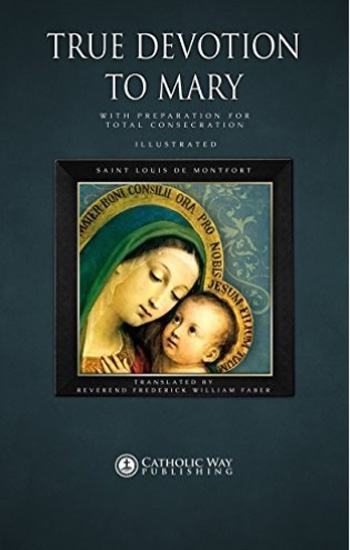 We see that that the Treaty on True Devotion clashes violently with Jansenism and Calvinism by asserting Our Lady’s role in the Church in the most powerful and sublime way imaginable. It takes devotion to Our Lady to the ultimate extreme inside Catholic theology.
We see that that the Treaty on True Devotion clashes violently with Jansenism and Calvinism by asserting Our Lady’s role in the Church in the most powerful and sublime way imaginable. It takes devotion to Our Lady to the ultimate extreme inside Catholic theology.
That means his work is not only one of reaction, but of ultra-reaction. In the face of error, it proclaims the truth in the most brilliant, energetic and radical way imaginable. He teaches that man must give himself and become completely enslaved to Our Lady to obtain salvation.
St. Louis Grignion’s book also fights the other premises of Calvinism and Jansenism because he demonstrates that there is no predestination as Calvin defined it, and that authentic predestination lies with those who follow Our Lady, whom she loves and supports. Everyone is called to practice this devotion and thus the gates of heaven are opened before him.
In other words, St. Louis Grignion’s religion is profoundly opposed to Calvin and Jansenius. While St. Louis Grignion is a lively, energetic, fiery and combatant Saint, he is also a joyful, luminous soul. He speaks about Heaven and Our Lady with joy and peace of mind, the exact opposite of Calvinism.
Love of the Cross counters the softness of the times
Another tendency present at this time was a horror of the Cross of Jesus Christ. Looking at art works of that time, we see they are dominated by the idea of pleasure. All the personages are depicted smiling, and ready to dance. Ball gowns are especially beautiful. The language was one of gala and celebration. The depict people who wanted to live only for frivolous, superficial pleasure, without seriousness or greatness of soul; life was nothing but pleasure and enjoyment.
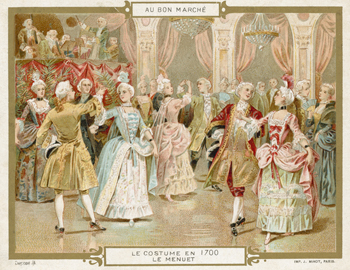 You can see that in the colors they used, which became increasingly light and shimmery. They were very beautiful colors but emollient for the soul: a rosy pink that almost fades into cream and white; a blue as tender and delicate as the blue of early dawn; a green like the new grass that first appears. All the hues took on shimmery light shades to nourish a mentality of easygoing, superficial and frivolous optimism.
You can see that in the colors they used, which became increasingly light and shimmery. They were very beautiful colors but emollient for the soul: a rosy pink that almost fades into cream and white; a blue as tender and delicate as the blue of early dawn; a green like the new grass that first appears. All the hues took on shimmery light shades to nourish a mentality of easygoing, superficial and frivolous optimism.
The Letter to the Friends of the Cross is precisely the opposite of this spirit. It teaches love of the Cross of Our Lord Jesus Christ, love of sacrifice, and instills a resolve to bear most serious evils for Our Lord’s sake and to fight and take things seriously. The Letter is an immense lesson in seriousness, making a head-on collision with the world’s increasing softness, which culminated in the overthrow of ancient institutions in the coming French Revolution. That softness even affected the clergy.
 For example, in engravings or paintings of priests and bishops of that time, they extend their hand out to be kissed as if they were marquises. They bless with a white, chubby hand. Many would place their hands in almond paste for hours to make them very white and beautiful when blessing. Pope Pius VI did that too.
For example, in engravings or paintings of priests and bishops of that time, they extend their hand out to be kissed as if they were marquises. They bless with a white, chubby hand. Many would place their hands in almond paste for hours to make them very white and beautiful when blessing. Pope Pius VI did that too.
All their gestures were delicate; for example, they would wield their croziers more or less as a marquise flourished her long walking stick embellished in ivory with gold and ribbons to walk in the park. They did everything with that tonus. So, The Letter to the Friends of the Cross is a roaring, radical rejection of the frivolity of the time that was part of the Revolution.
Because of the mentality of that time, persons were more concerned about using correct formulas than the substance of what they said. It was more important for a sentence to be brilliant than to contain truth. It was more important to be amusing than serious. The most brilliant and charming salon conversations increasingly adopted what the French call badinage, charming that leaps elegantly from one subject to another while laughing with a pseudo-superiority at the seriousness and profundity of it all.
 Instead of looking for the truth, instead of loving wisdom, the human mind loved precisely the opposite: frivolity. So, the treatise on The Love of Eternal Wisdom is a refutation of the idiotic superficiality being introduced into perhaps the most brilliant society that had existed up to that time.
Instead of looking for the truth, instead of loving wisdom, the human mind loved precisely the opposite: frivolity. So, the treatise on The Love of Eternal Wisdom is a refutation of the idiotic superficiality being introduced into perhaps the most brilliant society that had existed up to that time.
So you understand that the three books reacted to the errors of the time, which played a decisive role in the outbreak of the French Revolution. As is well known, the Jansenists supported the French Revolution; that frivolity and a thirst for pleasure debilitated the clergy and nobility and made them useless in the struggle against the Revolution; the lack of wisdom closed the eyes of nobility and clergy so they could not foresee the coming Revolution. For this reason, they were unable to implement policies that would have prevented it.
One can say with certainty that, had St. Louis Grignion been heeded, the Revolution would not have broken out. It would not have erupted mainly because a fervent devotion to Our Lady brings every good and thus would have brought a revival of religion. That religious revival would have blocked the way to the Enlightenment, the Encyclopedia and skepticism. It would thus have cut the sinews of the revolutionary hydra, which would have collapsed.
I do not know to what extent St. Louis de Montfort was aware of this. Still, for those who know French history, this is clear. St. Louis de Montfort published three books of great depth and value that sadly had minimal repercussions. If heeded, they would have prevented the Revolution. You see, then, that the counter-revolutionary fight is what unites these books. They are a magnificent preventive work of the anti-sophistic Counter-Revolution in the ideas, while at the same time fighting the tendential Revolution.
The proof is that the French Revolution did not break out in the regions where the congregation founded by St. Louis Grignion spread his doctrine and a fervent devotion to Our Lady. On the contrary, the Counter-Revolution was born there. The French Revolution erupted in places unreached by his influence. So you can see how his preaching really was the preaching of the Counter-Revolution. Therein lies the link of the works of St. Louis Grignion de Montfort.
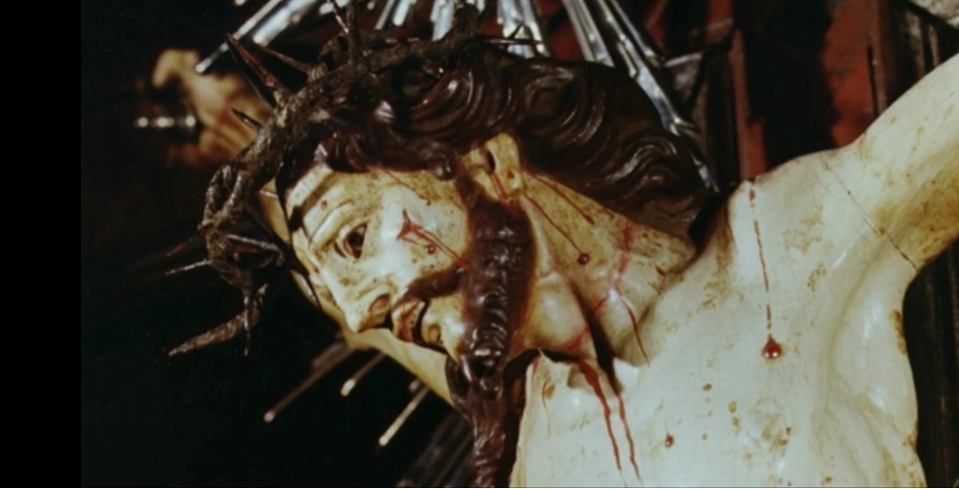


St. Louis -Marie de Montfort 1673-1716
In my view, we can say this link lies in the Saint’s stand against the errors of his time. The time in which he lived violently collided with his ideas and apostolate. We have seen how he lamented his extreme isolation, how all the mighty people of the time fought against him and sought to destroy his apostolate through silence and mockery.
That era was characterized by the defects of the nascent French Revolution, which have only worsened since. When we study the works of St. Louis Grignion, we see they in effect take a stand against those errors. With this set of books he aimed to react against the times. That reaction reveals their unity because there is a unity in the defects of that time. There is at least an implicit unity in the works to refute and combat the three errors. It is here that we find the concordance among the works of St. Louis Grignion de Montfort.
True Devotion: A Counter-Attack against Jansenism
What were the errors of that time? In the religious sphere, Jansenism was the most blatant. One can say that the vast majority of the French episcopate was Jansenist and were conspiring to separate from Rome. They enjoyed the support of countless clerics and, therefore, a vast number of faithful.

The errors of Calvin, left, were taken up by the Jansenists; at right, Mère Angélique, Superior of Port Royal, hotbed of Jansenism
The errors of Calvin that directly interest us are those of Protestantism: free examination of Scriptures, rejection of veneration for Our Lady, the saints and the Holy Eucharist, and especially hateful opposition against devotion to Our Lady. Also, errors concerning predestination, as he claimed that all men are born predestined for Heaven or Hell. When God creates a man to go to Hell, God forces him to be bad at the time of death and sends him to Hell even though he may have loved God throughout his life.
Conversely, if he blasphemed God all his life, but God created him to go to Heaven, God forcibly converts him at the time of death, and he ends up going to Heaven. The Jansenist religion was typically sad, hypochondriacal and gloomy, instilling a kind of horror for all the lawful pleasures of life. As one can see by consulting portraits of the time depicting Calvin and his later follower, Mère Angélique, the famous mother superior of Port Royal, they were cold and inundated with a horrible bad humor.

True Devotion defends the role and honor of Our Lady, attacked by the Jansenists & Protestants of the times
That means his work is not only one of reaction, but of ultra-reaction. In the face of error, it proclaims the truth in the most brilliant, energetic and radical way imaginable. He teaches that man must give himself and become completely enslaved to Our Lady to obtain salvation.
St. Louis Grignion’s book also fights the other premises of Calvinism and Jansenism because he demonstrates that there is no predestination as Calvin defined it, and that authentic predestination lies with those who follow Our Lady, whom she loves and supports. Everyone is called to practice this devotion and thus the gates of heaven are opened before him.
In other words, St. Louis Grignion’s religion is profoundly opposed to Calvin and Jansenius. While St. Louis Grignion is a lively, energetic, fiery and combatant Saint, he is also a joyful, luminous soul. He speaks about Heaven and Our Lady with joy and peace of mind, the exact opposite of Calvinism.
Love of the Cross counters the softness of the times
Another tendency present at this time was a horror of the Cross of Jesus Christ. Looking at art works of that time, we see they are dominated by the idea of pleasure. All the personages are depicted smiling, and ready to dance. Ball gowns are especially beautiful. The language was one of gala and celebration. The depict people who wanted to live only for frivolous, superficial pleasure, without seriousness or greatness of soul; life was nothing but pleasure and enjoyment.

A life taken up by a passion for pleasure & frivolities, & aversion to the Cross
The Letter to the Friends of the Cross is precisely the opposite of this spirit. It teaches love of the Cross of Our Lord Jesus Christ, love of sacrifice, and instills a resolve to bear most serious evils for Our Lord’s sake and to fight and take things seriously. The Letter is an immense lesson in seriousness, making a head-on collision with the world’s increasing softness, which culminated in the overthrow of ancient institutions in the coming French Revolution. That softness even affected the clergy.

St Louis preached the Cross of Christ, and was persecuted for this by the clergy of his times
All their gestures were delicate; for example, they would wield their croziers more or less as a marquise flourished her long walking stick embellished in ivory with gold and ribbons to walk in the park. They did everything with that tonus. So, The Letter to the Friends of the Cross is a roaring, radical rejection of the frivolity of the time that was part of the Revolution.
Because of the mentality of that time, persons were more concerned about using correct formulas than the substance of what they said. It was more important for a sentence to be brilliant than to contain truth. It was more important to be amusing than serious. The most brilliant and charming salon conversations increasingly adopted what the French call badinage, charming that leaps elegantly from one subject to another while laughing with a pseudo-superiority at the seriousness and profundity of it all.

An invitation to seek Wisdom rather than the superficial frivolity of the times
So you understand that the three books reacted to the errors of the time, which played a decisive role in the outbreak of the French Revolution. As is well known, the Jansenists supported the French Revolution; that frivolity and a thirst for pleasure debilitated the clergy and nobility and made them useless in the struggle against the Revolution; the lack of wisdom closed the eyes of nobility and clergy so they could not foresee the coming Revolution. For this reason, they were unable to implement policies that would have prevented it.
One can say with certainty that, had St. Louis Grignion been heeded, the Revolution would not have broken out. It would not have erupted mainly because a fervent devotion to Our Lady brings every good and thus would have brought a revival of religion. That religious revival would have blocked the way to the Enlightenment, the Encyclopedia and skepticism. It would thus have cut the sinews of the revolutionary hydra, which would have collapsed.
I do not know to what extent St. Louis de Montfort was aware of this. Still, for those who know French history, this is clear. St. Louis de Montfort published three books of great depth and value that sadly had minimal repercussions. If heeded, they would have prevented the Revolution. You see, then, that the counter-revolutionary fight is what unites these books. They are a magnificent preventive work of the anti-sophistic Counter-Revolution in the ideas, while at the same time fighting the tendential Revolution.
The proof is that the French Revolution did not break out in the regions where the congregation founded by St. Louis Grignion spread his doctrine and a fervent devotion to Our Lady. On the contrary, the Counter-Revolution was born there. The French Revolution erupted in places unreached by his influence. So you can see how his preaching really was the preaching of the Counter-Revolution. Therein lies the link of the works of St. Louis Grignion de Montfort.


Posted May 19, 2025
______________________
______________________
 Volume I |
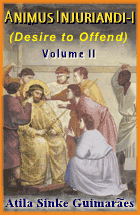 Volume II |
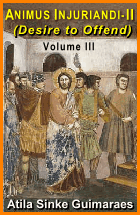 Volume III |
 Volume IV |
 Volume V |
 Volume VI |
 Volume VII |
 Volume VIII |
 Volume IX |
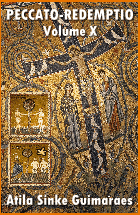 Volume X |
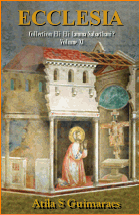 Volume XI |
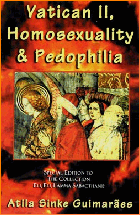 Special Edition |


